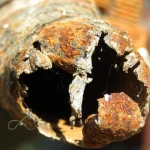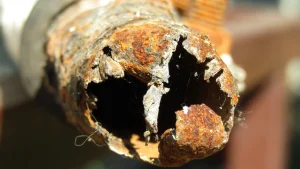
A prevalent issue in many homes, especially in humid regions like Singapore, is mould. Effective mould management, together with the help of a mould specialist in Singapore is crucial for a healthy home, regardless of the extent of the infestation. Early intervention can prevent further damage to your property and ensure the air quality in your home remains safe and clean. Here are some crucial dos and don’ts to help you successfully remove mould, which will simplify and expedite the process.
Do Act Quickly
Since mould can spread quickly, it’s critical to take care of the problem as soon as it appears. The removal procedure may become more challenging and expensive the longer you wait. Prompt action is essential, whether you notice a small patch or an increase in humidity. Making contact with a mould specialist will ensure that the task is completed efficiently and on time.
Do Identify the Source of Moisture
Mold flourishes in moist settings, making it essential to locate and remove the source of humidity. Inspect for leaks, inadequate ventilation, or water accumulation that could be causing the issue. A mould removal service can assist in detecting concealed moisture problems that may not be immediately apparent but could result in persistent mould development.
Do Use the Right Cleaning Solutions
Always use suitable mould cleaning products when removing small mould patches. Steer clear of strong chemicals that could damage your surfaces or exacerbate the issue. Specialised mould removers can be found, but if you’re uncertain, consult a professional mould removal service to guarantee that you’re utilising the safest and most efficient remedy.
Do Protect Yourself
Removing mould can expose you to dangerous spores that may impact your health. Always use protective gear, such as gloves, a mask, and goggles, when removing mould. Make certain the space is well-ventilated, and think about engaging a mould expert in Singapore if the mould is extensive or located in difficult-to-access spots.
Do Keep the Area Dry
Once the mould is eliminated, make sure the space is completely dried to stop it from coming back. Utilise fans or dehumidifiers to maintain low humidity levels, particularly in bathrooms, kitchens, or basements. A mould expert can help ensure the space remains dry and devoid of any dampness that might lead to regrowth.
Don’t Ignore Professional Help for Extensive Problems
If the mould problem is extensive, don’t attempt to handle it on your own. Large infestations may require professional tools and techniques that you might not have access to. A mould removal company can offer advanced remediation services to address the problem thoroughly and ensure that your home remains mould-free.
Don’t Use Bleach on Mould
Although bleach might appear to be a fast fix for mould, it isn’t always the most efficient approach. Bleach merely disinfects the surface and fails to eradicate the roots of the mould, which may lead to its reappearance. It’s preferable to use mould-specific products or consult a mould expert in Singapore.
Don’t Disturb the Mould Too Much
When you attempt to clean or disturb significant quantities of mould, you might release dangerous spores into the atmosphere, exacerbating the issue. It’s important to refrain from disturbing the mould, particularly in extreme instances. It’s advisable to reach out to a mould removal service, as they possess the appropriate tools and knowledge to eliminate mould securely without worsening the situation.
Don’t to Seal the Area After Removal
After eliminating the mould, it’s crucial to seal the space to stop any future development. If the mould impacted walls or ceilings, think about repainting with a mould-resistant coating. It’s advisable to periodically inspect the area to confirm that mould hasn’t reappeared.
Don’t Rely Solely on DIY Methods for Large Areas
For a significant mould outbreak, do-it-yourself tactics will be inadequate. Mold removal specialists possess the proper tools and expertise to manage serious issues, guaranteeing the task is completed safely and efficiently. A mould expert in Singapore can conduct an assessment and provide remediation solutions customised to your unique requirements.
Mould removal involves more than simply cleaning visible areas; it requires tackling the underlying issues and implementing measures to avert future development. Adhering to these guidelines will guarantee that your mould removal is successful and that your home remains healthy. Always respond promptly, utilise appropriate resources, and do not hesitate to reach out to a mould specialist in Singapore if the issue appears to exceed your abilities. To prevent further mould growth and ensure long-term success, it’s wise to get expert assistance from a mould removal company.
Contact Mould Guru for comprehensive mould removal services in Singapore that guarantee a safe, healthy environment.







